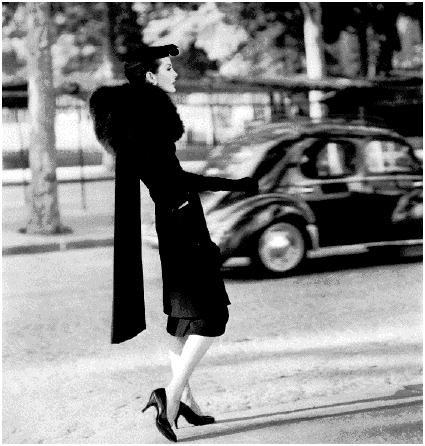Andrew Johnson
Chester G Hearn
(McFarland)
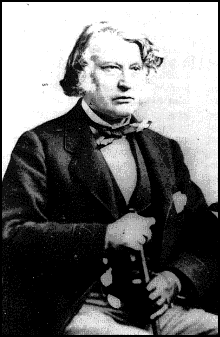 Look carefully at these three guys. The one up here is Charles Sumner. The one half-way down the page is Andrew Johnson. The one near the end of this article is Thaddeus Stevens. Take a gander at them and tell us which of them you would want running the country.
Look carefully at these three guys. The one up here is Charles Sumner. The one half-way down the page is Andrew Johnson. The one near the end of this article is Thaddeus Stevens. Take a gander at them and tell us which of them you would want running the country.Right. None of the above. But after the end of the American Civil War, and with the death of Lincoln, there wasn't much choice. Most the good men had either been murdered on the fields, or run out of government. All that was left were the scoundrels --- Andrew Johnson, and Congressmen Sumner, Stevens and Ben Wade, known as the Radicals.
Radicals. What does it mean? According to my beloved Webster's, it means one with "views, practices, and politics of extreme change." After that war, with most of a million young men dead on the fields and the country in turmoil, who wouldn't want some change?
The Radicals had, in fact, lost patience with the American form of government. They wanted to trade it in on a new model. During the war, Stevens, Sumner et. al. had tried to impeach Lincoln, and, when judicial decisions went against them, the entire Supreme Court. After the war, when Johnson started vetoing some of their prize legislation, they decided to go after him.
And why not? The Radicals wanted to give land to the freed slaves --- to be taken from white southern plantation owners. They wanted a Freedman's Bureau that would set up hospitals, health care, and schools --- along with civil rights --- for these ex-slaves. Johnson wouldn't go along with either of these, and, worse, he vetoed one of the Reconstruction bills that would have enfranchised Blacks to vote. But it was the veto of the Freedman Bureau bill in 1867 that got the Radicals all het up.
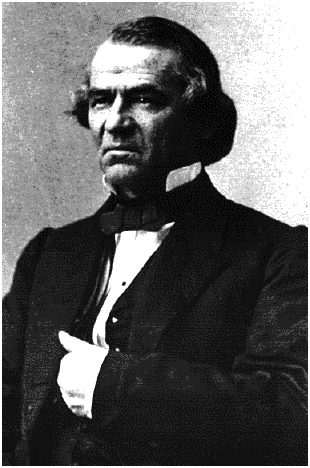 What a pity the impeachment didn't work out. The American system of government always has been and always will be a rat's nest stew. The judicial working against the legislative, the legislative sabotaging the executive, the executive trying to sneak things over on the judicial. It was a lousy system when it was stolen from the British in the 18th Century (who subsequently had the good sense to evolve away from it) and it was in even worse shape after a war which, indeed, may have been caused by its ridiculous inefficiencies.
What a pity the impeachment didn't work out. The American system of government always has been and always will be a rat's nest stew. The judicial working against the legislative, the legislative sabotaging the executive, the executive trying to sneak things over on the judicial. It was a lousy system when it was stolen from the British in the 18th Century (who subsequently had the good sense to evolve away from it) and it was in even worse shape after a war which, indeed, may have been caused by its ridiculous inefficiencies.
When you have a government always at loggerheads with itself, what happens? Those with money and connections step in and buy the legislation they want and can well afford. The rest of us never manage to get up to the lunch-table. (These days, all political business is done by "Political Action Committees." When those are outlawed, there will be --- guaranteed --- something else to take their place).
Now Sumner was a little funny in the head, admittedly. In those days we had something called freedom of access to the government, and ten years before, a cousin of a disgruntled congressman ran out onto the floor of the Senate and bonked him upside the cupola with a cane (ah, those halcyon days!) They say he never entirely recovered, but he was sane enough to know that the only thing to save the republic was a parliamentary form of government, much like that of mid-nineteenth century England.
He and Stevens and Wade figured that if they could impeach Johnson, they could get the double whammy: the vote, land, and health- Stevens, Wade and Sumner were so miffed at Johnson that they tried to load the deck --- came up with eleven Articles of Impeachment. Despite their hard work, on the 16th of May 1868 one Senator Edmund Ross of Kansas defected from the Radical pack. The vote was 34 to 16 to impeach --- one less than needed. The Radicals lost and the rest of us lost as well. The chance for our country once and for all to abandon this three- If you doubt the truth of what I am saying, spend a day or so watching and listening to the floor debates on C-SPAN. Then compare these yawners to the rich, robust debates --- complete with shouting, insults, and wonderful questioning --- that take place in the Parliaments of England, Canada, Australia, or New Zealand. Then you might feel the pity of it --- the pity of what we could have had, if the Radicals had only prevailed; the pity of what we have lost.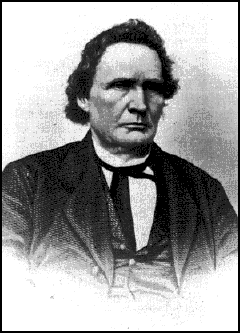 By the way, Hearn finds the Radicals to be abhorrent. His praise of Johnson is overwrought. His writing is little better than a high school text book, but, The Impeachment of Andrew Johnson makes exciting reading anyway. Why? Not because of the author's style (there is none) --- but because of the fascinating subject matter.
By the way, Hearn finds the Radicals to be abhorrent. His praise of Johnson is overwrought. His writing is little better than a high school text book, but, The Impeachment of Andrew Johnson makes exciting reading anyway. Why? Not because of the author's style (there is none) --- but because of the fascinating subject matter.
The Way of Making Love
Philip Toshio Sudo
(Harper/San Francisco)
- The yin-yang principles of tension and release underlie every dramatic art form. The art of lovemaking is no exception. Play with the yin and yang, and build that sexual tension to the breaking point. When the moment comes: Let go.
Philip Sudo tells us that among the zen masters over the centuries there was a Ikkyu Sojun from the fifteenth century whose schtick was love, sex, passion. His poems were quite graphic, viz: "When my jade stalk wilts, she can make it sprout!/How we enjoy our intimate little circle."
Ikkyu's words form much of the thrust, if you will, of Zen Sex --- brought together in chapters like "What is Zen Sex?" "The Way of Anticipation," "The Way of Accepting," "The Way of Union." Along this moist path, Sudo quotes not only from the master, but Plato, Chinese Cosmology, "Poets of Asia," the Tao Te Ching, Mu-nan (1602-1676), Shoju (1642-1721), the Japanese tea ceremony, and, lord help us, Deepak Chopra, Kahlil Gibran, and the "Serenity Prayer," God, grant me the serenity to accept the things I cannot change... etc., etc., blah blah blah.
If you suspect, as I do, that Sudo has arrived at the landing with a garbage scow loaded with wood- Zen means a great many different things to many different people, but ideally, it is an aesthetic view of life which demands harmony and restraint. To fill up the bean-bag with passion, sexuality, making babies and hot nights panting on the larder floor seems not quite in keeping with the single- The best that can be said for Zen Sex is that it has interesting illustrations. They're called shunga or "spring pictures," Playboy shots from Japan from 200 years ago. Admittedly, like everything else in this thin volume, they have absolutely nothing to do with self-realization and more to do with selling a few more copies of Zen Sex. But they are jolly good, even though the reproduction stinks. We would suggest that Sudo, fresh from his successes with tomes like Zen Guitar and Zen Computer, abandon this effort to jam an honorable religious system into the old squeeze-box, and, instead, just give us a full volume of the shunga, blown up to a respectable size, in full color, so that us old bastards, without our specs, can figure out what the hell is going on in that gray area between those intertwined Oriental bodies. That would be something to make us forget this satori nonsense right off.
Women
Georgina Howell
(Thunder's Mouth Press)
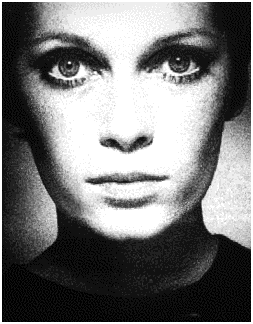 Remember how those models in Vogue used to look? Distant, cool, a bit snooty. And what do they look like now? Well, distant, cool, a bit snooty --- but sometimes right angry, as if, maybe we shouldn't be gazing at them with such fixity.
Remember how those models in Vogue used to look? Distant, cool, a bit snooty. And what do they look like now? Well, distant, cool, a bit snooty --- but sometimes right angry, as if, maybe we shouldn't be gazing at them with such fixity.In this volume of 174 pages we have perhaps a hundred pictures out of the pages of Vogue, or at least from their collection --- both color and black-and-white. The whole has been divided into ten rather arbitrary subsections --- "royalty," "society girls," "muses," "stars," "waifs," "icons" among others. We get two shots each of Elizabeth Taylor and Jackie Kennedy and Princess Diana and other royalty. Queen Mary --- not the ship but the Queen Mother --- looks, as always, dour, as if the camera were better off somewhere out of her royal face. Sarah Bernhardt seems quite billowy, Grace Kelly looks quite merry, Julie Christie appears hungry, and Twiggy looks to be rather wan. Twiggy is listed here as a "waif," as is Mia Farrow, see above. Robert Penn Warren called it "that famished look." Penelope Tree, also a waif, looks like she just got out of sixth grade homeroom.
There are some surprise appearances. There's Queen Elizabeth, not the ship but Her Majesty, looking like a windblown figure out of the Pre-Raphaelites. Since this is Vogue Women, the only men allowed, except a couple of pashas (and dogs popping out of Nena's car) are royalty, or what's left of it --- the Duke of Windsor frowning out of a Gothic window, next to the toughest Vanity Fair woman of them all, and Prince Charles, aged 11 months, being peered at lovingly by Princess Elizabeth. Caroline of Monaco is allowed one tux-dressed male, but all they give to Marilyn Monroe is a sheet. Stella Tennant appears with a ring in her navel, and Barbara Streisand sports a hat left over from the Cavaliers, or is it the Roundheads? Princess Anne gets a horse, and Marlene Dietrich a tutu.
 There is a set to all this. No uglies please. No smiles, either; well, maybe five or six --- the best being awarded to Shirley McLain, or Diana Vreeland, off there to the right. No rags, nor clothes from Target (pronounced, for purposes of this volume, in the style of the French, "Tar-SHAY,") although Mother Teresa's head-cloth (what's she doing here?) looks simple but, somehow, fashionable. They put her on the same page as Margaret Thatcher who looks just like she ate a bug.
There is a set to all this. No uglies please. No smiles, either; well, maybe five or six --- the best being awarded to Shirley McLain, or Diana Vreeland, off there to the right. No rags, nor clothes from Target (pronounced, for purposes of this volume, in the style of the French, "Tar-SHAY,") although Mother Teresa's head-cloth (what's she doing here?) looks simple but, somehow, fashionable. They put her on the same page as Margaret Thatcher who looks just like she ate a bug.
The text is by Georgina Howell, a Vogue lady --- both in England and in the U.S. Most of it is filler stuff ("The First World War had changed the role of women, giving them jobs and independence..." "Both wars gave women extraordinary confidence, and the periods that followed --- the 1920s and the 50s --- were eras of extreme and exuberant fashion changes.") However we will have to give her a prize for a one line haiku that appears on the Library of Congress page, a nine word statement that may mean everything about High Fashion. Or nothing:
The moral right of the author has been asserted.
Hear-hear.
